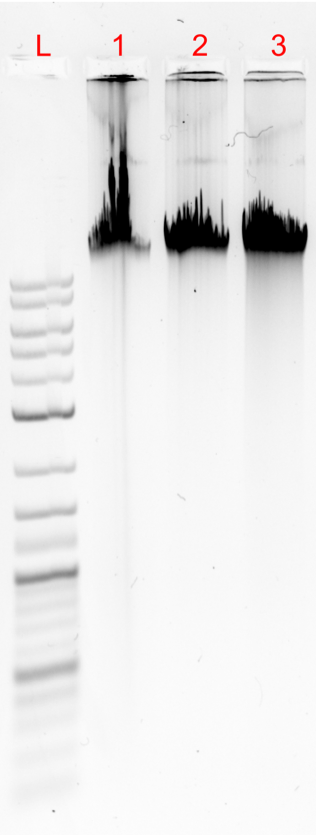HMW DNA extraction for diatoms
Raffaela Abbriano
Disclaimer
DISCLAIMER – FOR INFORMATIONAL PURPOSES ONLY; USE AT YOUR OWN RISK
The protocol content here is for informational purposes only and does not constitute legal, medical, clinical, or safety advice, or otherwise; content added to protocols.io is not peer reviewed and may not have undergone a formal approval of any kind. Information presented in this protocol should not substitute for independent professional judgment, advice, diagnosis, or treatment. Any action you take or refrain from taking using or relying upon the information presented here is strictly at your own risk. You agree that neither the Company nor any of the authors, contributors, administrators, or anyone else associated with protocols.io, can be held responsible for your use of the information contained in or linked to this protocol or any of our Sites/Apps and Services.
Abstract
Protocol for genomic DNA extraction from diatom cell culture without use of phenol/chloroform. Resulting DNA fragments were suitable for nanopore sequencing.
Before start
Steps
Harvest cells
Harvest approximately 7 x 107 - 2 x 108cells from mid-exponential phase by centrifugation (5000xg, 3 minutes)1. Wash pelleted cells once with 1X PBS (5000xg, 3 minutes) and remove the supernatant
Cell lysis and RNAse treatment
Resuspend cells in 600 L Nuclei Lysis Solution (Promega #A7941)1. Freeze in dry ice or liquid nitrogen for 3 minutes and thaw in 65˚C heat block or water bath for 3 minutes (or until completely thawed)
- Repeat freeze/thaw cycle 3X
- Heat to 65˚C for 15 minutes
- Let sample cool to room temperature and add 1.2 μL of 10 mg/ml RNase A (ThermoFisher #ENO531)
- Incubate for 15 minutes at 37˚C in heat block or water bath
- Let sample cool to room temperature
Safety information
Be aware that rapid temperature changes can cause pressure to build up inside epi tubes, causing the lids to pop open. Use safe lock epi tubes or lid locks for the freeze/thaw step.https://us.vwr.com/store/product/4615516/lidlocks-microcentrifuge-tube-locks-sorenson-bioscience
Protein precipitation
Add 250 μL Protein Precipitation Solution and mix well (Promega # A7951)1. Centrifuge (16,000xg) for 40 minutes at 4˚C
- Transfer supernatant to fresh tube
DNA precipitation
Precipitate DNA by adding 700 μL 100% isopropanol, mix well by inversion1. Centrifuge (16,000xg) for 30 minutes at room temperature
- Wash DNA pellet with 600 μL freshly prepared 70% molecular grade ethanol
- Centrifuge (16,000xg) for 1 minute and remove all ethanol from the pellet (use quick spin and a smaller pipette tip if necessary to remove all residual ethanol)
- Air dry DNA pellet for 10-15 minutes
- Resuspend DNA pellet in ~25-50 μL TE buffer, depending on pellet size and desired DNA concentration
- Let DNA pellet resuspend in TE buffer at room temperature overnight (HMW gDNA takes longer to dissolve)
- Determine DNA concentration by Nanodrop
Note
After isopropanol precipitation, DNA pellet may appear as a translucent smear on the side of the tube. Pellet becomes more visible (white) following the ethanol wash step.
Gel electrophoresis
1. Run 100-200 ng DNA on a 0.8% agarose gel
Example data:

L = ladder (top band = 40kb)
-
Phaeodactylum tricornutum
-
Thalassiosira pseudonana
-
Chaetoceros muelleri

